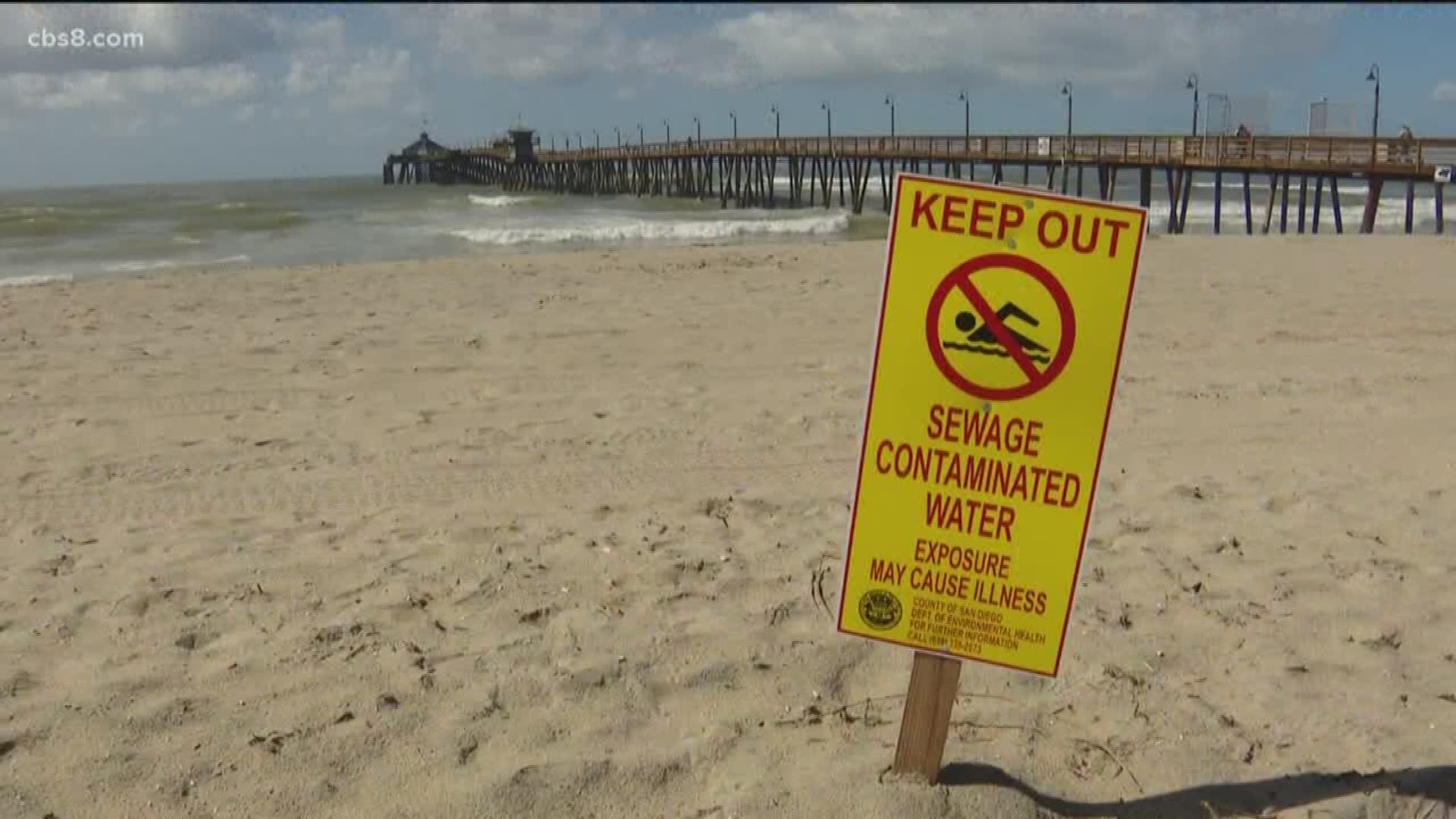SAN DIEGO —
For decades, high bacteria levels have forced San Diego beaches to be closed off and on. Often, the cause is runoff from the Tijuana River or discharge when something goes wrong at a sewage treatment plant.
Both sides of the border used to contribute to the issue that's bubbled for years. In the 1980s, then Imperial Beach Mayor Brian Bilbray tried to illegally dam the Tijuana river in what turned into an all-out brawl amid protest.
Over the last decade, the U.S. has spent millions to build out the South Bay International Wastewater Treatment Plant. It takes in 25 million gallons of raw sewage a day under the border wall.
A machine goes down to where the sewage is collected. It picks up anything larger than two inches including bottle caps, rocks and other debris which is then taken by conveyor belt to a holding room and is eventually returned to Mexico.
The sewage continues through a sprawling facility to start a 12-hour process. All water held in five tanks, pushed through in a process that takes about four hours. By the time it’s done, sediment is taken away to another facility and the water is about 75% clean. From there it's treated once again.
Eventually when it's 97% clean water it's released into the ocean several miles offshore.
The sludgy waste is solidified and trucked back to Mexico up to 10 times a day.
That is the process for sewage that is supposed to get treated. What about when something goes wrong? It often ends up in gulches like Smuggler’s Gulch – capable of holding 14 million gallons – but it is diverted away from the ocean
But the process is only effective during the dry season and when everything's running right. Significant rainfall pushes trash into the Tijuana River and eventually millions of gallons of questionable river water end up in our oceans.
Even if both governments spent the estimated half-billion dollars needed for new sewage treatment facilities, engineers and water experts tell News 8 it wouldn't solely solve the problem.
Part of that is because like the U.S., Mexico struggles to attract qualified staff.
Doctor Marisela Martínez Quiroz is a professor at the Center for Technical and Higher Education.
“The truth is getting into the public sector in Mexico is hard and our students, when they leave, have more opportunities in the private sector. Because there are more projects and the salary is higher,” she said.
Students at Tijuana's private engineering school help with local government projects. And American experts say Mexico is trying to solve the problem.
In September, Governor Gavin Newsom signed a bill allocating $15 million to stem the flow of toxic sewage into California - but it's a drop in the sewage tank.
Last week, the San Diego City Council reaffirmed a state of emergency over the issue. It's also joining the state in a lawsuit against the federal government. Mayor Kevin Faulconer went to Washington, D.C., to call for more action.
“The force of momentum that we have right now, I think, is some of the strongest we've ever had as a region,” Faulconer said. “We are saying very directly, it's time to fund those projects.”

